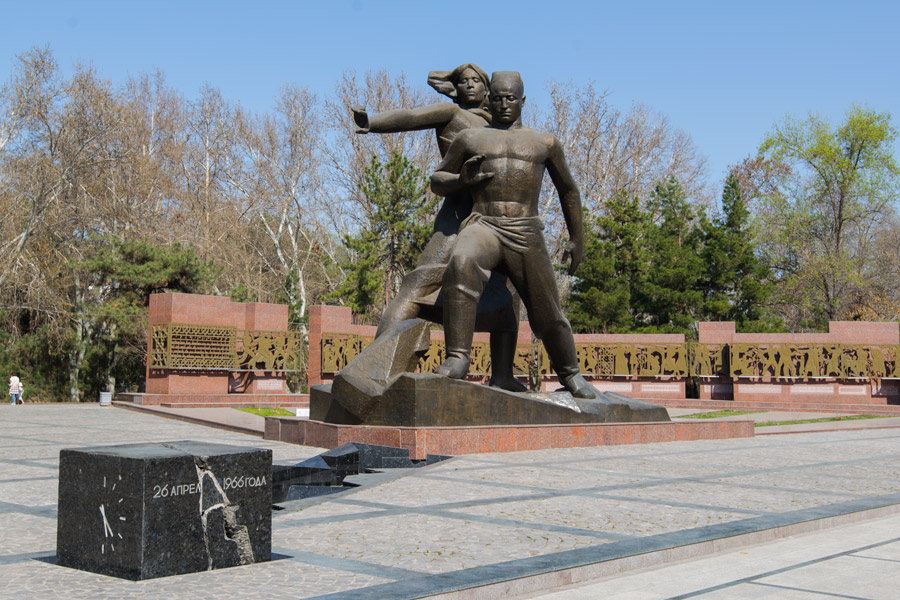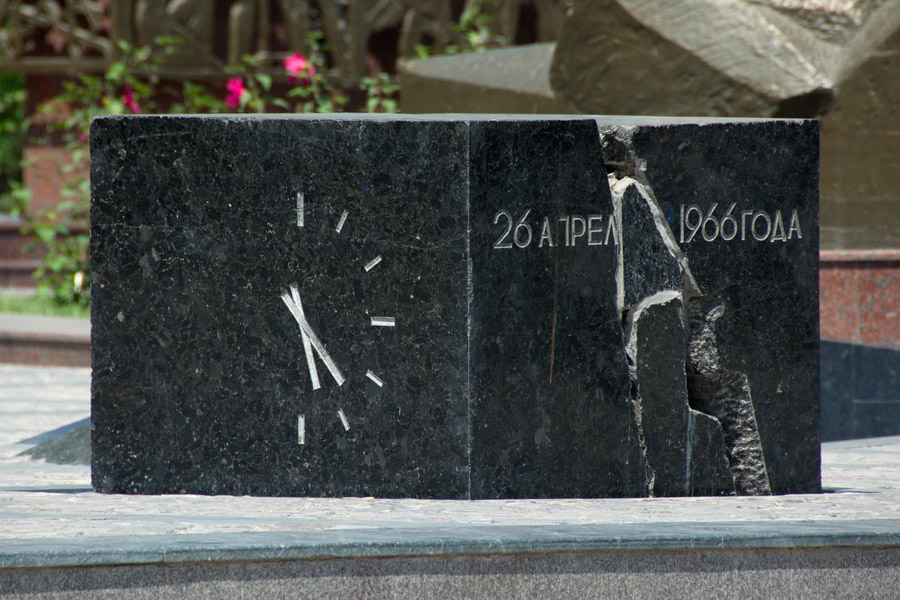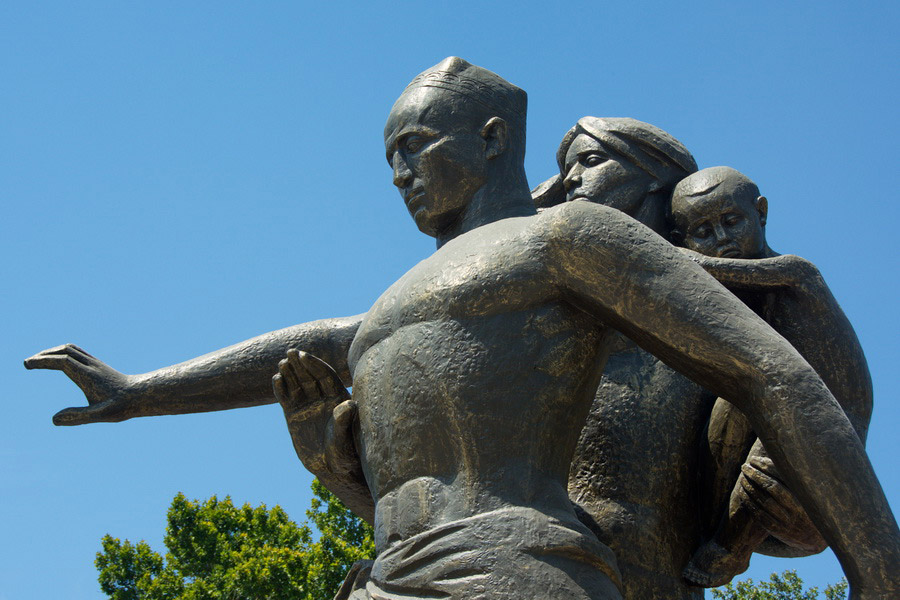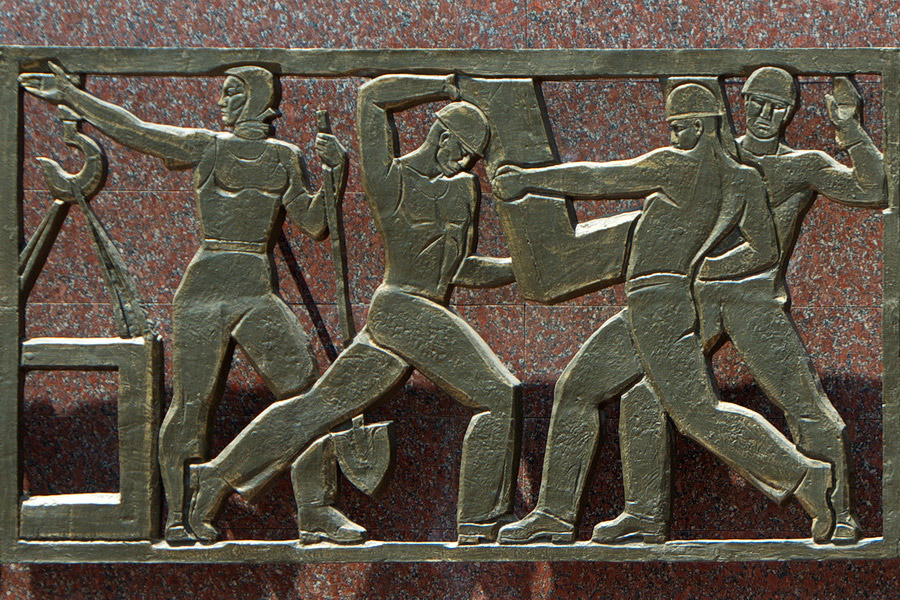
The Courage monument is one of the key symbols of Tashkent’s 20th-century history, located in the heart of the city. This dramatic monument commemorates one of the darkest days in the country’s past - it honors both the survivors of the disaster and those who helped the city recover in its aftermath. Listed in the top things to do in Tashkent, the monument offers a powerful insight into the city's resilience and Soviet-era architecture.
At 5:23 a.m. on April 26, 1966, Tashkent was shaken awake by the terrifying roar of powerful underground tremors. Just five kilometers beneath the city, an earthquake with a magnitude of 5.2 on the Richter scale struck. The strong tremors lasted only 10 to 15 seconds, but they were enough to destroy thousands of homes and leave 300,000 people homeless. Fortunately, the number of casualties was relatively low - estimates range from 8 to 13 deaths, some caused by heart attacks.

Humanitarian aid was sent to Tashkent immediately, with tent camps quickly established and debris removal underway. Soon after, builders from across the USSR arrived in the Uzbek capital to help rebuild the city. The reconstruction took a record 3.5 years. Tashkent’s appearance changed dramatically - its traditional one-story neighborhoods of adobe brick were replaced by 4- to 5-story residential blocks built from fired brick and concrete. In recognition of the hardships endured by the city’s residents and to honor the builders who helped reconstruct it, the Courage Memorial Complex was inaugurated on May 20, 1970, at the very site of the earthquake’s epicenter.
The Courage monument consists of three main elements: a black cube engraved with the date and time of the Tashkent earthquake, a bronze sculpture of a man and woman holding a child, and 14 steles with bronze reliefs depicting scenes from the city’s restoration. From the cracked black cube, a jagged fissure leads toward the family, shown shielding themselves from the disaster. Behind them, marble paths branch out toward the bas-reliefs representing the 14 union republics of the USSR that came to Tashkent’s aid. The memorial was designed by Sabir Adilov, who would go on to shape much of Soviet Tashkent’s architectural landscape in the 1970s and 1980s. The sculpture of the resilient family was created by Russian artist Dmitry Ryabichev.

Today, the Courage monument is one of the most popular places for relaxation in Tashkent. Behind it lies a small park that houses the Museum of Olympic Glory, originally established in 1976 as the Museum of Friendship of the Peoples of the USSR. A white cable-stayed bridge spans the Anhor Canal, linking this park with the Navruz Ethnographic Park, where visitors can ride the largest Ferris wheel in Tashkent and explore workshops and shops offering Uzbek clothing and souvenirs.

The Courage monument has become a symbol of Tashkent’s revival and modern history, born from the aftermath of a natural disaster. Its construction marked the beginning of a new architectural direction, seismic modernism, which can still be seen in the Tashkent TV Tower, the Tashkent Metro, the People’s Friendship Palace, the Museum of the History of Uzbekistan, the Zhemchug House, and other landmarks from that period.
Only a few century-old houses, now reinforced with metal beams and brick supports, still stand as silent reminders of the 1966 earthquake. While the black cube bearing the engraved date and time remains the focal point of the memorial, the Courage monument has come to symbolize not tragedy, but resilience and solidarity. Nearly every newlywed couple visits the site after the registry office to take photos - a tradition deeply woven into Tashkent life. Each evening, families stroll through the park, couples gather, and children play freely in this space that blends memory with everyday joy.

